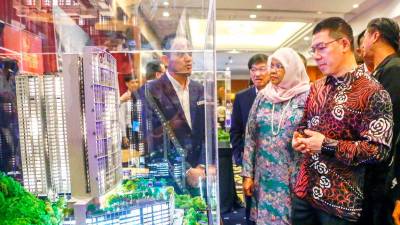KUALA LUMPUR: Seven of Kuala Lumpur’s most iconic heritage landmarks will be restored by next year as part of the government’s efforts to balance urban development with the preservation of history and culture, said Housing and Local Government Minister Nga Kor Ming.
He said the initiative underscores Malaysia’s commitment to progress without losing sight of its cultural identity.
“This is the best testimony of our belief: development must go hand in hand with history, heritage and culture.
“Even as Malaysia moves towards becoming a developed nation, our cultural identity remains preserved in our hearts,” he said after launching the 16th International Conference on World Class Sustainable Cities (WCSC) 2025 yesterday.
Nga said RM700 million has been allocated this year to revive seven national landmarks, including Carcosa Seri Negara, the Textile Museum, Sultan Abdul Samad Building and the Old General Post Office.
“These landmarks and iconic symbols of pride will be given a new face and new life by Visit Malaysia Year 2026, reflecting the values of Madani where cultural identity remains safeguarded and celebrated even as the nation advances towards developed status.”
The minister also cited the Tourism, Arts and Culture Ministry’s latest report, which recognised Malaysia as the most popular and liveable country in Asia.
He said tourist arrivals reached 20.6 million in the first half of this year and the number is projected to surpass 41 million by Christmas – higher than Malaysia’s population and the largest figure recorded since independence in 1957.
Nga said restored heritage buildings will be given new roles, such as the Sultan Abdul Samad Building, which will serve as a hub for Made in Malaysia brands.
“Tourists want authentic local experiences, such as Malaysian coffee, which is why brands like Old Town, Oriental Coffee, Secret Recipe and Kopi KawKaw will be featured at restored heritage sites.
“We aspire for these brands to one day become international names, standing shoulder to shoulder with Starbucks and Chagee.”
More than 800 participants attended the WCSC 2025, underscoring the event’s role in shaping the future of sustainable cities.
“This conference, now in its 16th year, reflects our continuous commitment. I hope such efforts will persist so that Malaysia continues to elevate its stature on the world stage as a global leader in the sustainable development agenda.”
He stressed that resilience is not only about strong infrastructure but also about preserving heritage, culture, identity and community values.
“For Malaysia, ‘Malaysia Truly Asia’ is more than just a slogan. It reflects harmony and unity in diversity – a strength embodied by Kuala Lumpur, where modern towers stand alongside timeless heritage.”
Nga added that all public market projects valued above RM10 billion must now go through both open tender and design competitions to ensure the best results.
He also affirmed Malaysia’s readiness to work with global partners through the UN-Habitat Assembly, aiming to integrate New Urban Agenda into the Conference of the Parties process under the United Nations Framework Convention on Climate Change in Brazil next month.
“Next year will mark the 10th anniversary of the New Urban Agenda, first proposed by Malaysia, which links climate action with urban transformation.
“The way forward must be progressive and ambitious, with accelerated climate adaptation, nature-based solutions like ecological corridors and river restoration, and strong partnerships between the public, private and people sectors.
“WCSC 2025 is a true reflection of the Malaysian urban experience and reminds us that development means nothing if it is not anchored in people and places.”
